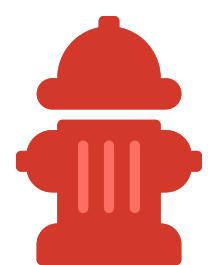Breaking News - Flossing prevents tartar
May 15th, 2021
What is Tartar and Dental Plaque?
Tartar also called calculus, is hardened dental plaque.
Dental plaque is soft, extremely sticky, and is the buildup of
millions of bacteria. It then gets hardened
and is called tartar.

Plaque damages tooth enamel and leads to cavities.
It can get under your gums and irritates gum tissues.
It also sticks to fillings and other dental work.
Tartar also absorbs stains, and causes cosmetic issues.
Signs and symptoms of Gum Disease:
Red or swollen gums
Tender or bleeding gums
Painful chewing
Loose teeth
Sensitive teeth
Gums that have pulled away from your teeth

Gingivitus:
According to Crest, 75% of Americans will experience
gum disease at some point in their life.
When the gums bleed and become swollen, plaque has made its
way under the gum line. This is called gingivitis.
This can lead to pain and weakened tooth enamel as well.
Causes:
Poor oral Hygiene,
Not fully removing plaque,
poor nutrition,
(sugars and starches), such as Candy, milk, Cakes,
soft drinks, or raisins are frequently left on the
teeth
Chronic diseases

Prevention:
The best way to treat this problem is
to get it early.
Brushing twice a day and flossing at least
twice a day will help you to eliminate
as much plaque as possible.
Mouthwash can also be helpful to eliminate
plaque.

Many children tend to get tartar quickly due to
things like candy, cake, and soft drinks like soda.
Make an appointment as soon as you can so a
dental professional can remove plaque and tartar
from your child's teeth.
Professionals use special tools to accomplish this.
Removal:
Dental Hygienists and Dentists make it look easy when
removing tartar from your teeth. This leads
to the belief that one can do the removal themselves
and save themselves from an appointment.
It is very important that you don't attempt
to remove tartar on your own. It can be very dangerous
to do this because it can cause damage to your
gums and create recession in the gums.
This is where gums move away from the teeth and expose
roots. These roots are sensitive, can be damaged,
and can lead to infections.
All in all, maintaining your child's dental care
routine can be easy.
If your child has not had a dental visit in a while,
or if you don't have a Children's general dentist for your child,
please contact us.
To schedule a first consultation or visit, please contact us at
one of our locations:
SCHEDULE an appointment here





